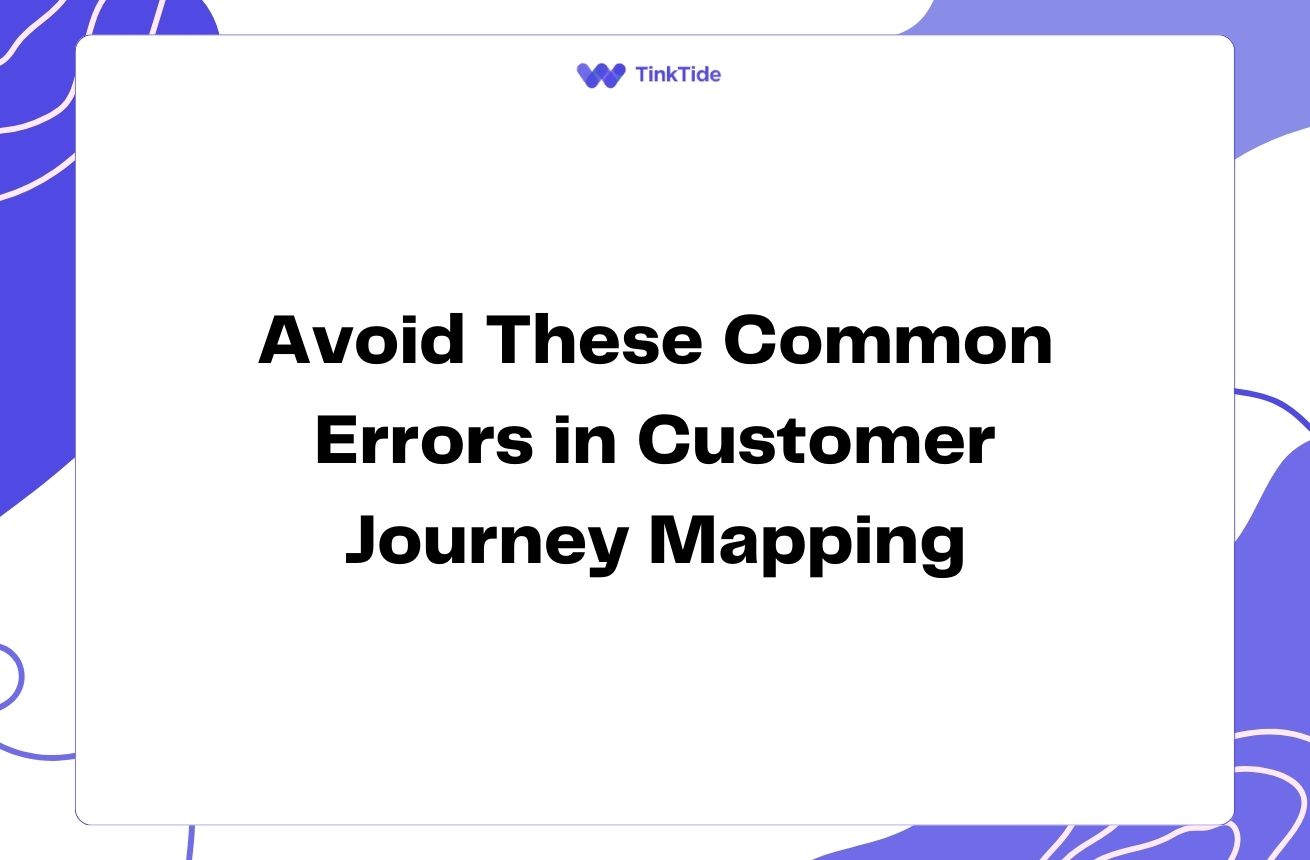Mastering Customer Journey Mapping: A Guide to Growth
What is Customer Journey Mapping?
Customer journey mapping is a powerful tool that visualizes the entire experience a customer has with your brand. It's like creating a roadmap of all the interactions, or 'touchpoints,' a customer has with your company from their first awareness of your product or service to post-purchase support.
This strategic approach helps businesses understand their customers' needs, pain points, and emotions at each stage of their journey. By mapping out these experiences, companies can identify areas for improvement and create more seamless, satisfying customer interactions.
According to a McKinsey report, companies that effectively manage the entire customer journey can see a 10-15% increase in revenue and a 20% increase in customer satisfaction.
Key Components of a Customer Journey Map
A comprehensive customer journey map typically includes several key elements:
- User Personas: Detailed profiles of your target customers
- Stages: The different phases of the customer's interaction with your brand
- Touchpoints: Specific interactions between the customer and your company
- Actions: What the customer does at each stage
- Emotions: How the customer feels during each interaction
- Pain Points: Challenges or frustrations the customer experiences
- Opportunities: Areas where you can improve the customer experience
The Importance of Customer Journey Mapping
Customer journey mapping is not just a trendy business practice; it's a crucial strategy for improving customer experiences and driving business growth. Here's why it's so important:
1. Enhanced Customer Understanding: By visualizing the entire customer journey, businesses gain deeper insights into their customers' needs, preferences, and pain points. This understanding allows for more targeted and effective marketing strategies.
2. Improved Customer Experience: Identifying pain points in the customer journey allows businesses to address issues proactively, leading to smoother, more satisfying customer experiences. A PwC study found that 32% of customers would stop doing business with a brand they loved after just one bad experience.
3. Increased Customer Retention: By focusing on improving the entire customer journey, businesses can increase customer loyalty and reduce churn. According to Bain & Company, increasing customer retention rates by 5% can increase profits by 25% to 95%.
Steps to Create an Effective Customer Journey Map
Creating a customer journey map involves several key steps:
- Step 1: Define your objectives and scope
- Step 2: Create detailed user personas
- Step 3: Identify all customer touchpoints
- Step 4: Map out the customer journey stages
- Step 5: Add customer actions, emotions, and pain points
- Step 6: Identify opportunities for improvement
- Step 7: Test and refine your map
Tools for Customer Journey Mapping
Several tools can help you create effective customer journey maps:
1. Miro: An online collaborative whiteboard platform with pre-built customer journey map templates.
2. Lucidchart: A diagramming tool that offers customizable customer journey map templates.
3. Smaply: A specialized customer experience mapping tool that allows for the creation of personas, journey maps, and stakeholder maps.
4. UXPressia: A customer experience management platform that offers tools for creating customer journey maps, impact maps, and personas.
Best Practices for Customer Journey Mapping
To get the most out of your customer journey mapping efforts, consider these best practices:
1. Use Real Data: Base your journey maps on actual customer data rather than assumptions. Use surveys, interviews, and analytics to gather accurate insights.
2. Involve Multiple Departments: Customer journey mapping should be a collaborative effort involving teams from marketing, sales, customer service, and product development.
3. Keep It Customer-Centric: Always focus on the customer's perspective, not your internal processes.
4. Update Regularly: Customer journeys evolve over time. Regularly update your maps to reflect changing customer behaviors and preferences.
Measuring the Impact of Customer Journey Mapping
To ensure your customer journey mapping efforts are paying off, it's crucial to measure their impact. Here are some key metrics to consider:
1. Customer Satisfaction Score (CSAT): Measure how satisfied customers are at different touchpoints.
2. Net Promoter Score (NPS): Gauge customer loyalty and likelihood to recommend your brand.
3. Customer Effort Score (CES): Assess how easy it is for customers to accomplish their goals.
4. Customer Churn Rate: Track the percentage of customers who stop doing business with you.
5. Customer Lifetime Value (CLV): Measure the total worth of a customer to your business over the whole period of their relationship.
Address common questions
Here are some frequently asked questions about customer journey mapping:
How often should we update our customer journey map?
Customer journey maps should be living documents, updated regularly to reflect changes in customer behavior, market conditions, and your business offerings. A good practice is to review and update your maps at least quarterly, or more frequently if you're in a rapidly changing industry.
Can small businesses benefit from customer journey mapping?
Absolutely! Customer journey mapping can be particularly valuable for small businesses as it helps them understand their customers better and identify areas where they can compete effectively with larger companies. It doesn't require extensive resources and can lead to significant improvements in customer satisfaction and loyalty.
How do we handle multiple customer segments in journey mapping?
For businesses with diverse customer segments, it's often beneficial to create separate journey maps for each major segment. This allows you to capture the unique needs, behaviors, and pain points of different customer groups. You can then look for commonalities and differences across these maps to inform your overall strategy.
What's the difference between a customer journey map and a service blueprint?
While both tools visualize the customer experience, a customer journey map focuses on the customer's perspective, emotions, and actions. A service blueprint, on the other hand, includes the customer journey but also maps out the behind-the-scenes processes, systems, and employee actions that support the customer experience. Service blueprints are typically more detailed and used for operational improvements.
How can we ensure our customer journey map leads to actionable insights?
To ensure your journey map leads to actionable insights, involve key stakeholders from different departments in the mapping process, use real customer data, and clearly identify pain points and opportunities. Set clear goals for what you want to achieve with the map, and create a plan for addressing the issues and opportunities you've identified. Regular reviews and updates will help ensure the map remains a valuable, actionable tool.
Provide additional resources
Nielsen Norman Group: Customer Journey Mapping 101
A comprehensive guide to customer journey mapping from UX experts
Harvard Business Review: Using Customer Journey Maps to Improve Customer Experience
An in-depth look at how journey maps can drive business value
Forrester: The New Era Of Customer Journey Mapping
Insights on the evolution and future of customer journey mapping
Gartner: Create Powerful Customer Experiences
Strategies for enhancing customer experiences through journey mapping
Interaction Design Foundation: Customer Journey Maps - Walking a Mile in Your Customer's Shoes
A detailed exploration of the customer journey mapping process
Summarize key takeaways
Customer journey mapping is a powerful tool for understanding and improving the customer experience. By visualizing the entire customer journey, businesses can identify pain points, enhance satisfaction, and drive growth. Remember to base your maps on real data, involve multiple departments, and regularly update your maps to reflect changing customer behaviors.
In today's competitive business landscape, providing an exceptional customer experience is more important than ever. Customer journey mapping gives you the insights you need to create those experiences, fostering loyalty and driving business success.
Start mapping your customers' journeys today and unlock the potential for improved customer satisfaction, increased retention, and sustainable business growth. Your customers - and your bottom line - will thank you.
Enhance Your Customer Experience Strategy
Ready to transform your customer journey? Start mapping and optimizing today.
Start Your Free Trial
